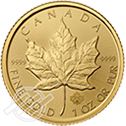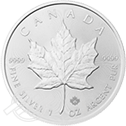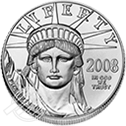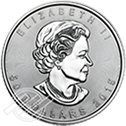How Does a Precious Metals IRA Work?
A precious metals IRA works almost exactly like the individual retirement account that you may already have.
The big difference is a precious metals IRA is self-directed—meaning you pick and choose what you want to own—and you can own physical assets, as well as paper assets inside of the plan.
You have control over what you want to own and how much.
What Are Precious Metals?
Precious metals are rare metals that have a high economic value.
Rare metals are typically malleable, highly conductive, and non-corrosive. They are essential in the manufacturing process of modern technology, such as solar panels, automobile parts, computers, cell phones, touchpads, and electronics.
Known worldwide for their beauty, precious metals are coveted and used to manufacture the finest jewelry and adornments.
Precious metals are also used as currency. From ancient civilizations until now, mankind has found value in precious metals and has formed its finest coinage from metals.
The most popular and widely utilized precious metals are:
- Gold
- Silver
- Platinum
- Palladium
There are many other metals that are widely used, but aren’t considered precious metals. These include:
- Steel
- Copper
- Aluminum
All have a great value and varied uses, but are not rare in nature or valued intrinsically for their beauty.
What is a Precious Metal IRA?
In general, precious metals IRA rules are the same as the rules of traditional, Roth, and Simplified Employee Pension (SEP) IRAs.
If you already own an IRA, it can be transferred tax-free and penalty-free into a self-directed precious metals IRA. While most IRAs are paper asset based, self-directed IRAs allow for ownership of physical assets inside the account.
If you are age 59 ½ and own a 401(k) type of plan, or still have a 401(k) type plan from a previous job, you may roll it over tax-free and penalty-free into a self-directed IRA.
Investors who ask “How does a precious metals IRA work?” are typically looking to invest outside of typical stocks, bonds, treasuries, and CDs. They often turn to the precious metals IRA to achieve:
- Diversification
- Hedge against inflation
- Tangible asset
- Tax-advantaged investing
Eligible Precious Metals
The IRS has strict guidelines on the precious metals allowed in an IRA. They ensure items meet specifications for purity, origin, and condition.
Coins must meet minimum fineness criteria, be uncirculated, new, and in perfect physical condition. All coins must come from government mints.
Bars and rounds must meet minimum fineness criteria and come from approved manufacturers.
Gold
Gold must be 99.5% pure. Coins are available in 1/10, 1/25, ½, and 1 ounce denominations. Bars are available in varied weights, and smaller bars must weigh exactly as stamped. Popular coins for the Gold IRA include the 1 ounce gold American Eagle from the US Mint, and 1/25 ounce gold Lynx coin from the Royal Canadian Mint.
Silver
Silver must be 99.9% pure. Coins are typically ¼, ½, 1 oz, and 1 ½ ounces. Popular coin choices for a Silver IRA are the Royal Canadian Mint’s 1 ½ ounce silver Eagle and the 1/25 ounce silver Lynx.
Platinum
Platinum bars and coins must be 99.95% pure to be IRA eligible.
Palladium
Palladium bars and coins must be 99.95% pure to be IRA eligible.
Considerations When Purchasing Precious Metals IRA
So, how does a precious metals IRA work in your favor?
Simply put, owning precious metals in an IRA is one of the safest ways to own metals.
The precious metals IRA rules—enacted by the IRS—ensure that you not only own the finest metals in your retirement account, but that they are safely stored.
There are also tax advantages that may be available to you as you diversify your IRA portfolio with gold, silver, platinum, and palladium.
Storage and Security
Rules require metals that are owned in an IRA to be stored in an approved depository.
Depositories are vaults that must meet IRS standards for storage, accounting, safety, and insurance.
World-class depositories, approved for safekeeping IRA eligible precious metals, include:
- Delaware Depository
- Brinks
- JP Morgan Chase
- HSBC Bank
Not only does a depository keep your metals safe and secure, but it carries insurance that protects your investment from loss.
Tax Advantages
All IRAs are designed to provide a tax advantage.
Traditional and SEP IRAs are established with pre-taxed funds. The idea is that when you reach the eligible withdrawal age of 59 ½, you will be generating less income than you were when you were younger.
When withdrawals are made and counted as ordinary income, the assumption is that you will pay less taxes then than you would pay now.
Additionally, pre-taxed IRA contributions may be tax-deductible in the year that the contribution is made.
For Roth IRAs, you contribute with after-tax funds.
When eligible withdrawals are made from age 59 ½, the withdrawn funds— no matter how much they’ve grown—are tax-free.
Consult with your tax professional or CPA for more information and to find the right IRA plan for you.
Diversification
For true portfolio diversification, it’s smart to invest in different asset classes.
Physical precious metals allow you to own an asset that is non-correlated to the stock market. They are not directly tied to the ups and downs that the collective stock market can experience.
Physical precious metals are referred to as safe-haven assets. Investors often turn to metals to protect their wealth and preserve their buying power as paper-based assets are failing.
Owning physical metals also adds a tangible asset to your portfolio. Even while stored in a depository, you can arrange a visit and you can hold your metals in your hands.
Because they have existed and had value throughout history, it is safe to assume that your metals likely won’t go to zero.
Setting Up a Precious Metals IRA
Setting up a precious metals IRA is easy.
A reputable and well-known company, like Advantage Gold, has trained account executives who will walk you through the process.
Your assigned professional will ensure you understand the precious metals IRA rules and help you follow them.
Our staff at Advantage Gold will help you:
- Decide which type of IRA is right for you
- Complete the short application
- Transfer your current IRA
- Roll-over your eligible 401(k) or like plan
- Fund your account
- Choose and purchase your metals
- Pick a depository
- Be available to answer questions
Precious Metals IRA Rules
- You may contribute up to $6,500 to your traditional or Roth IRA, per year, up to age 50. After age 50, you may contribute up to $7,500 per year.
- You may contribute up to $66,000 or 25% of compensation—whichever is less—to an SEP IRA.
- With all IRA types, you may withdraw funds without penalty at age 59 ½. If you withdraw earlier, your withdrawal may be subject to a 10% penalty and will immediately be considered earned income.
- SEP and traditional plans have required minimum distributions (RMDs) which begin at age 72. Funds must begin to be withdrawn on a yearly basis and tax liability met. Because Roth IRA contributions are made with after-tax funds, withdrawals have no tax liability and there is no RMD requirement.
Setting Up a Precious Metals IRA
We’ve spent the last decade helping clients like you. At Advantage Gold, we’re experts at the process and our account executives and award-winning IRA team will walk you through it step by step.
To get started, simply call us or let us know how to best contact you via the link below.
We’re happy to help.



